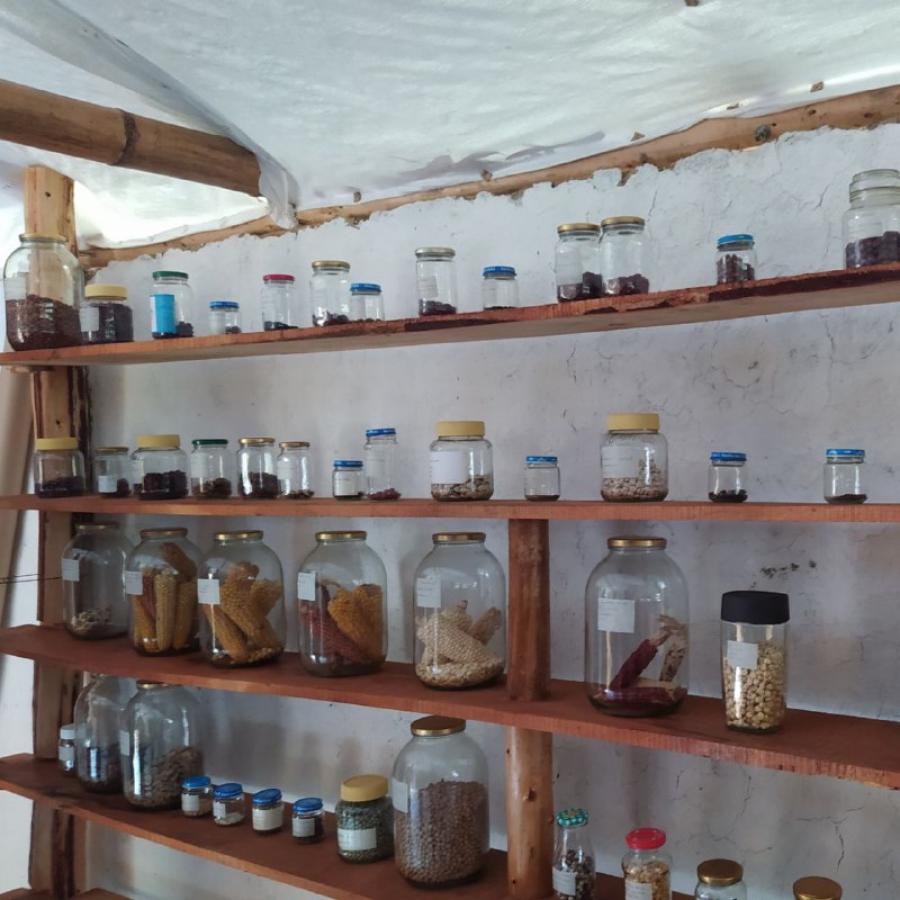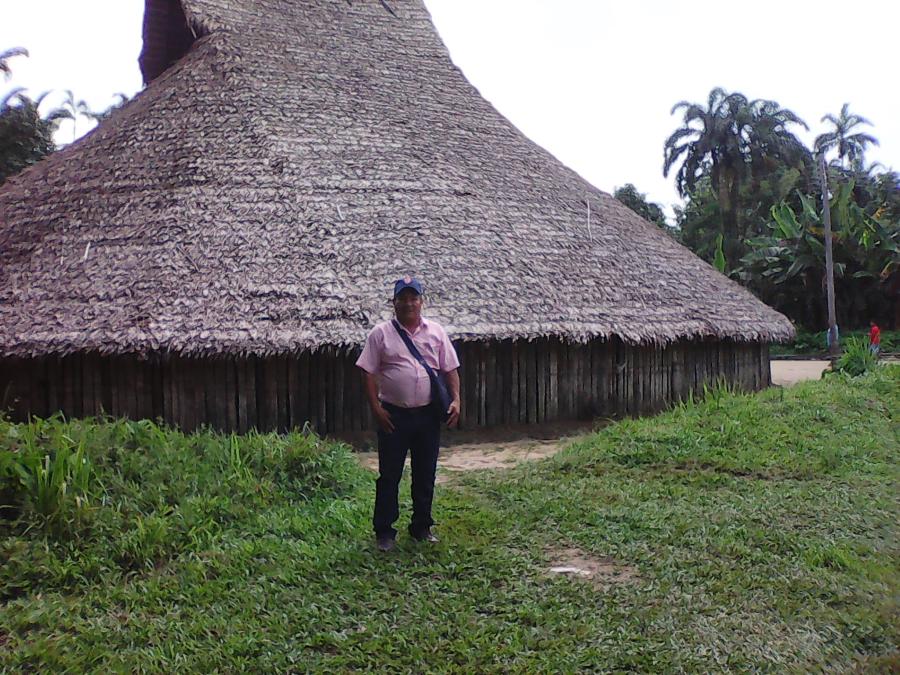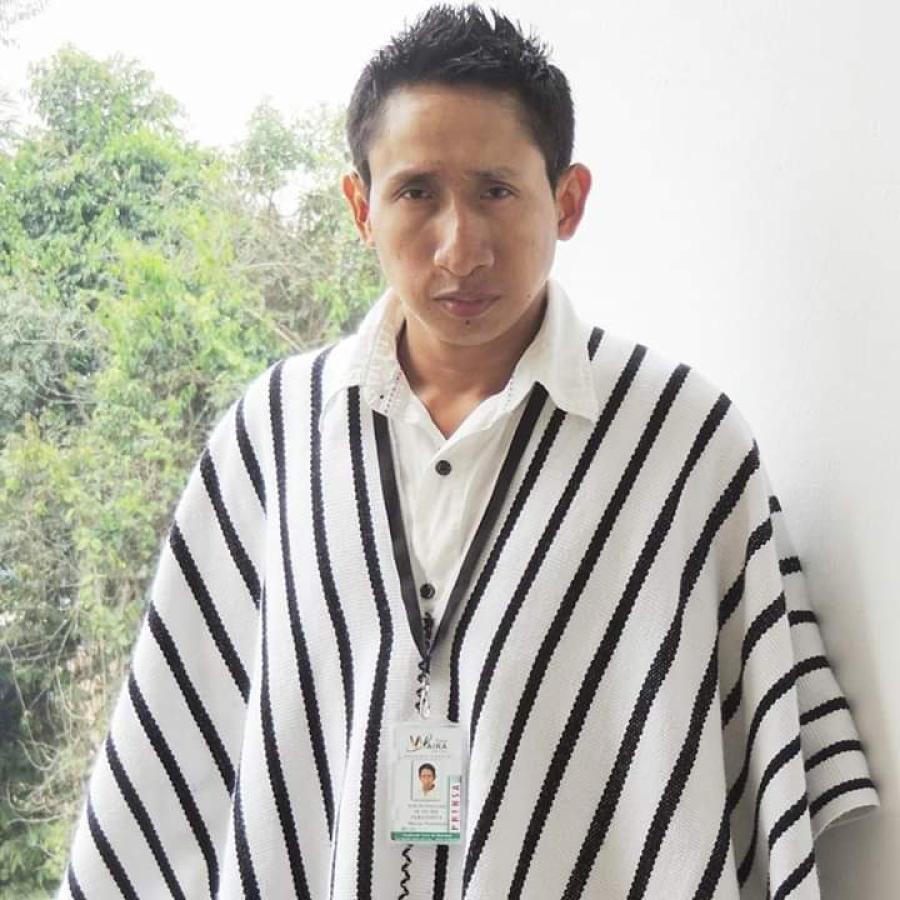A papermaking project supported by Cultural Survival is helping Colombia's Macuna Indians find economic self-sufficiency and a sense of control over their own destiny. The Macunas are one of the more organized indigenous communities in the Amazonian rain forest, in an area declared an indigenous reserve in 1988. The community in Centro Providencia has been a local leader in self-development, successfully building a school and a health clinic. Most of the families in Centro Providencia live within the forest folds not far fro the heart of Providencia, where the school and health clinic stand.
Up until recently, the lack of jobs led Macunas to seek work elsewhere, causing the disintegration of their community and dilution of their culture. many make desperate expeditions to the gold mines, but find the high cost of living consumes most of their wages, with the rest drowned in cachasa, a sugar cane-based alcohol. many men return from the mines discouraged and poorer than before. Others rely on fishing, but the local trading center for fish is 12 hours away by outboard motorboat and a couple of days' journey by dugout canoe. A handful work as maids in Bogota, but most Macuna prefer to remain in their own community.
For those who stay, the traditional means of subsistence-fishing, hunting, and farming-are not longer enough, since cash is needed for necessities such as fish hooks, cooking pots, and machetes. Thus the Macuna welcomed Cultural Survival's papermaking project, the result of their direct requests to Massachusetts artist Rick Harlow when he first visited the region. Harlow felt that paper produced in the Amazon would have a wide appeal for artists and other paper connoisseurs in the States. He approached paper producers and distributors in the States and found a viable market.
For the trial run, one of the local community members, Luis Macuna, offered to coordinate the project, faithfully leaning all the facets of papermaking from building the workshop to experimenting with fibers and design. He is now producing paper with three other workers, all of whom are excited by the prospects of exporting the paper. The original workers were men, because the women work in the fields from dawn to dusk, but the women have already begun to participate by collecting and preparing the raw materials.
The next phase of the project in fact will expands the small papermaking workshop goals is to have at least one member of the project more effective, both to make the project more effective and the community more cohesive.
The papermaking project helps the Macuna on other levels, for its promotes protection of the environment, cooperation among neighboring indigenous groups, and mutual support with other development initiativies. It genuinely integrates a concern for local economy well-being with environmental respect. "Native knowledge of the local flora has been essential for identifying the fiberrich plants with the greatest potential for making paper," according to Harlow. "The most plentiful and renewable, by far, is the yarumo. It is colonizer and is most common in secondary growth areas of the forest. From an environmental standpoint it is ideal."
Neighboring indigenous communities, such as the Yucuna and the Tanimuka, have also expressed strong interest in joining the papermaking project, and the workshop in Centro Providencia will serve as a model for these communities. Says Harlow, "There is a need for inter-community activity in order to unify the region. The more the indigenous groups are able to cooperate with each other on issues such as economic subsistence, health, and education, the better they are able to lobby for themselves."
The project also enjoys mutual support with other development initiatives in the community such as the Apaporis Health Project, founded in 1987 to confront epidemics such as malaria and acute respiratory infection. The health project has made its woodworking shop available to the paper workshop and has developed community training session, a useful model for training future papermakers. In return, funds generated by the papermaking project may be used to buy medicine for the health project.
Article copyright Cultural Survival, Inc.



